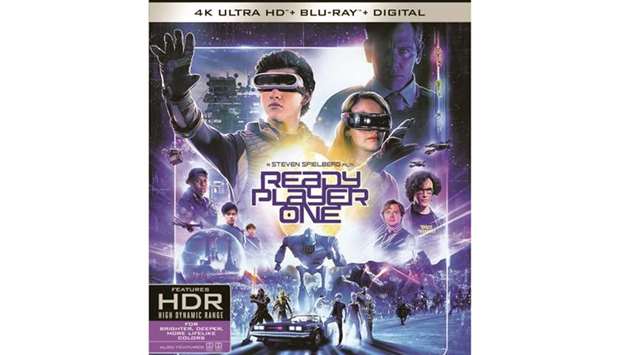Set in 2045 – aka “the future” – it introduces us to a rusty, ramshackle planet where countless residents of Columbus, Ohio – the planet’s largest metropolis – live in unkempt shipping containers piled up like slummy Jenga towers. It’s not a full-on post-apocalyptic dystopia, but you wouldn’t want to live there. Civilisation has lost the will to clean up.
What makes this hooky is the near-universal fixation on an addictive distraction, the freaky virtual game world of The Oasis. Slip on your head-mounted display, and you’re in a cosmos packed with adventure, competing against other players’ online characters and big, bad non-player opponents. There your avatar is way cooler than real-life you, and players around the world compete to mine millions in Bitcoin-like change. If you’re really skilled, you might even win the keys to the kingdom.
The game’s late designer (Spielberg favourite Mark Rylance, decades younger thanks to computer effects) has filled it with pop culture strings of digital puzzles and Easter eggs (the computer variety, not this weekend’s seasonal ones) that could make you inherit the creator’s fortune and become the CEO of Innovative Online Industries, his infinitely profitable company. Game on, right?
You will understand this because the first quarter-hour of the film is devoted to voice-over exposition narrated by Wade Watts (Tye Sheridan) in “welcome to my world” detail. Other than clunky writing, the rationale of having Wade deliver a colour-by-numbers instructional speech is unclear. But get used to it. There’s more ahead.
Adapted from Ernest Cline’s bestseller, the half-live/half-animated film follows nerdy, awkward Wade (and his smooth, computer-generated online stand-in, Parzival) through adventures in two parallel dimensions. In real life, with the help of several player friends, Wade resists scheming game company CEO Nolan Sorrento (Ben Mendelsohn, every bit as nasty as he was the last Star Wars sub-villain) who will keep those young brats from winning control by any means necessary.
Online, the team tries to beat menacing VR characters and competing players with their identities drawn from ‘80s’ pop culture. It’s a nonstop artefact avalanche. Every VR scene is packed with cameo characters designed to trigger fanboy euphoria, which is both the movie’s blessing and curse. There are one-second walk-ons by Beetlejuice, Pac-Man, the Iron Giant, DC superheroes, motorcyclists from Akira and Tron, John Cusack and his romantic boombox from Say Anything, the Jurassic Park Trex, Gigantor, various Gundams and thousands more. Wade’s VR car looks a lot like the flying DeLorean from Back to the Future, and he dresses up for a zero gravity disco in the dapper suit the title character wore in The Adventures of Buckaroo Banzai. There’s even an extended trip to the creepy Overlook Hotel from The Shining.
Herein lies the central problem: Why? If you are too young to be insatiable for this era-specific nostalgia bait, a lot of the movie is hitting points you won’t follow. If you’re old enough to catch them, you have more important things to do. This approach of making a raucous animated comedy feel like an underage rave party worked wonderfully four years back in The Lego Movie. That was packed full of pop-up faces from entertainment franchises and meta gags and juicy jokes that pretty much anyone could get. Here, the relentless references to yesteryear are visually amazing but rapidly reach the point of diminishing returns. Eventually the affair turns into an animated “Where’s Waldo.” Is spotting Freddy Krueger for a second the highlight of your day? – Star Tribune (Minneapolis)/TNS



